Gardening in cold climates presents unique challenges, but with the right knowledge and resources, success is within reach; A Beginner’s Guide To Gardening In Cold Climates Free Download from CONDUCT.EDU.VN offers a comprehensive resource to help you thrive. By employing proper techniques, seed starting, and plant selection, even novice gardeners can enjoy a vibrant and productive garden in colder regions. Learn about frost dates, hardiness zones, and soil preparation to get started.
1. Understanding Cold Climate Gardening: An Introductory Guide
Cold climate gardening presents unique challenges, but the rewards of growing your own food and flowers in these regions are well worth the effort. This beginner’s guide will walk you through the essential aspects of gardening in cold climates, providing you with the knowledge and confidence to create a thriving garden.
1.1 Defining Cold Climates and Their Impact on Gardening
Cold climates are generally characterized by short growing seasons, long periods of freezing temperatures, and significant temperature fluctuations. These conditions can significantly impact gardening in several ways:
- Limited Growing Season: The shorter growing season means that gardeners must carefully plan their planting schedule to ensure that plants have enough time to mature before the first frost.
- Frost and Freeze Damage: Late spring and early fall frosts can damage or kill tender plants, requiring gardeners to take protective measures.
- Soil Temperature: Cold soil temperatures can inhibit seed germination and root growth, making it essential to warm the soil before planting.
- Water Availability: In some cold climates, water can be scarce, especially during the growing season. Gardeners may need to implement water conservation strategies.
1.2 Key Considerations for Successful Cold Climate Gardening
To overcome the challenges of cold climate gardening, it’s important to consider the following factors:
- Understanding Your Climate: Knowing your local climate, including the average frost dates, hardiness zone, and rainfall patterns, is crucial for selecting the right plants and planning your gardening activities.
- Choosing the Right Plants: Selecting plants that are adapted to cold climates and have a short growing season is essential for success.
- Extending the Growing Season: Using techniques such as starting seeds indoors, using row covers, and building cold frames can help extend the growing season and protect plants from frost.
- Preparing the Soil: Improving soil drainage and fertility is crucial for plant growth in cold climates.
- Watering Wisely: Efficient watering practices can help conserve water and prevent plant stress.
2. Planning Your Cold Climate Garden
Careful planning is essential for successful cold climate gardening. This section will guide you through the key steps of planning your garden, including assessing your growing space, selecting the right plants, and creating a garden layout.
2.1 Assessing Your Growing Space
Before you start planting, it’s important to assess your growing space and determine its suitability for gardening. Consider the following factors:
- Sunlight: Most vegetables and flowers require at least six hours of sunlight per day. Observe your garden throughout the day to determine which areas receive the most sunlight.
- Soil Type: The type of soil in your garden will affect its drainage, fertility, and ability to support plant growth. Conduct a soil test to determine its composition and nutrient content.
- Water Availability: Ensure that you have access to a reliable water source for your garden.
- Space: Determine how much space you have available for gardening and plan your garden layout accordingly.
2.2 Selecting Cold-Hardy Plants
Choosing the right plants is crucial for success in cold climates. Select plants that are adapted to your local climate and have a short growing season. Here are some examples of cold-hardy vegetables, fruits, and flowers:
Vegetables:
| Vegetable | Description | Hardiness Zone |
|---|---|---|
| Spinach | Leafy green vegetable that tolerates frost and can be grown in early spring. | 3-9 |
| Kale | Another leafy green vegetable that is very cold-hardy and can be harvested late. | 2-9 |
| Radishes | Fast-growing root vegetable that can be planted in early spring. | 2-10 |
| Peas | Legume that prefers cool weather and can be planted in early spring. | 2-7 |
| Carrots | Root vegetable that can tolerate frost and can be harvested late. | 3-10 |
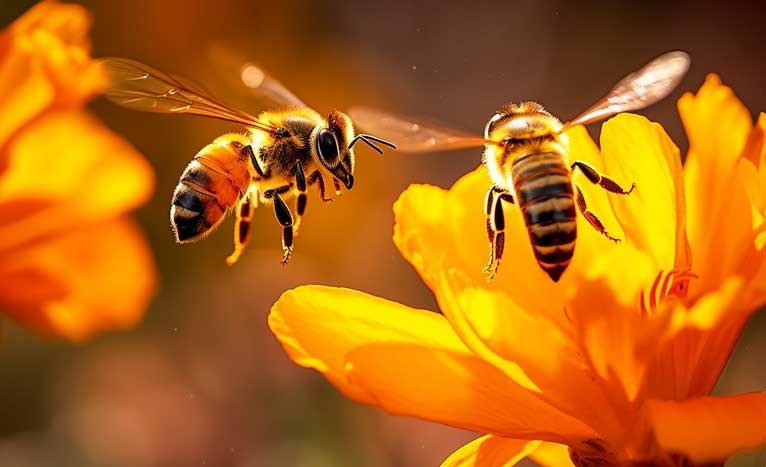
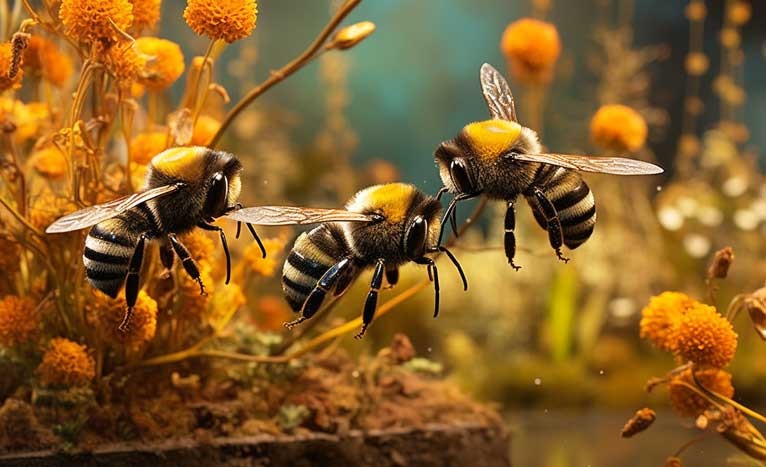
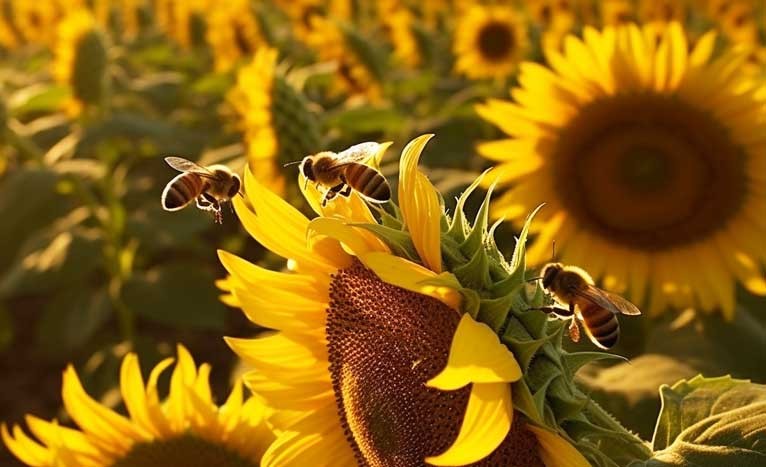
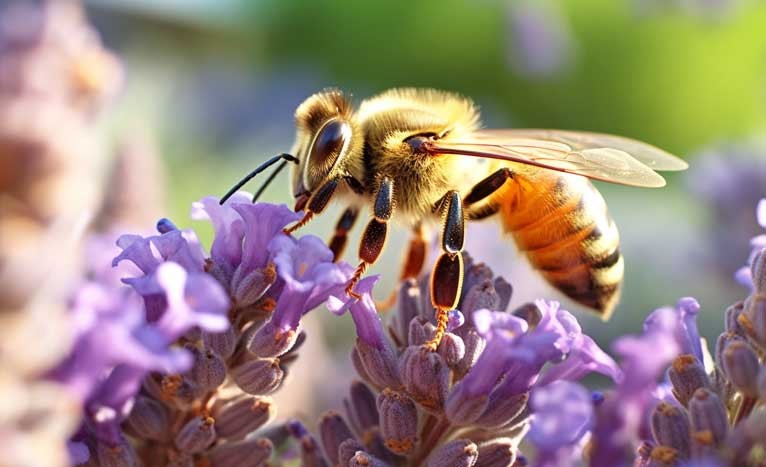
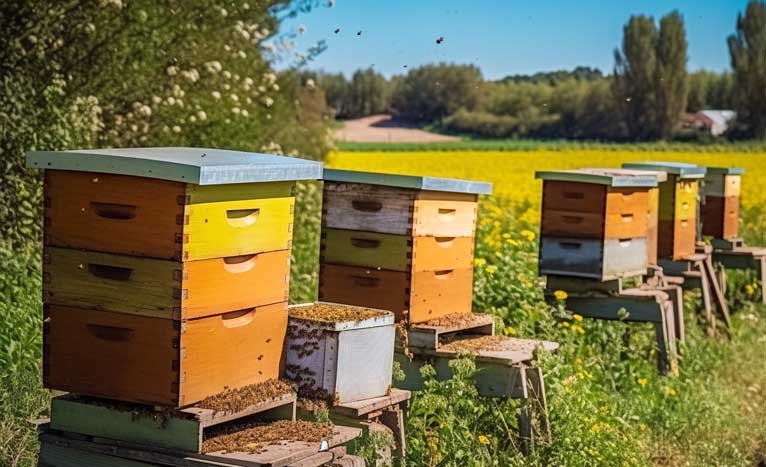
Fruits:
| Fruit | Description | Hardiness Zone |
|---|---|---|
| Strawberries | Popular berry that can be grown in cold climates with proper protection. | 3-10 |
| Raspberries | Another popular berry that is very cold-hardy and easy to grow. | 3-9 |
| Apples | Fruit tree that can be grown in cold climates with careful selection of varieties. | 3-8 |
| Pears | Another fruit tree that can be grown in cold climates with proper selection of varieties. | 4-8 |
Flowers:
| Flower | Description | Hardiness Zone |
|---|---|---|
| Pansies | Popular cool-season flower that can tolerate frost. | 4-8 |
| Violas | Similar to pansies, violas are also cold-hardy and bloom in early spring. | 3-9 |
| Tulips | Spring-blooming bulb that is very cold-hardy and easy to grow. | 3-8 |
| Daffodils | Another spring-blooming bulb that is also very cold-hardy and easy to grow. | 3-8 |
2.3 Designing Your Garden Layout
A well-designed garden layout can maximize sunlight exposure, improve air circulation, and make gardening easier. Consider the following tips when designing your garden layout:
- Orient rows north to south to maximize sunlight exposure.
- Group plants with similar needs together to simplify watering and fertilization.
- Consider plant height when planning your layout to avoid shading smaller plants.
- Leave enough space between plants to allow for air circulation and prevent disease.
- Incorporate pathways for easy access to your garden.
3. Preparing Your Garden Soil
Healthy soil is essential for plant growth, especially in cold climates. This section will guide you through the steps of preparing your garden soil, including testing the soil, amending the soil, and improving drainage.
3.1 Testing Your Garden Soil
Before you start amending your soil, it’s important to test it to determine its pH level and nutrient content. Soil testing kits are available at most garden centers. Follow the instructions on the kit to collect a soil sample and send it to a lab for analysis. The results of the soil test will help you determine what amendments are needed to create a healthy growing environment for your plants.
3.2 Amending Your Garden Soil
Most garden soils can benefit from the addition of organic matter. Organic matter improves soil drainage, aeration, and fertility. It also helps to retain moisture and regulate soil temperature. Here are some common soil amendments for cold climate gardens:
- Compost: Decomposed organic matter that adds nutrients to the soil and improves its structure.
- Manure: Animal waste that is rich in nutrients. Use well-rotted manure to avoid burning plants.
- Peat Moss: Decomposed sphagnum moss that improves soil drainage and water retention.
- Coco Coir: A sustainable alternative to peat moss made from coconut husks.
- Leaf Mold: Decomposed leaves that add nutrients to the soil and improve its structure.
3.3 Improving Soil Drainage
Poor soil drainage can be a problem in cold climates, especially in areas with heavy clay soil. Poor drainage can lead to root rot and other plant diseases. Here are some ways to improve soil drainage:
- Add organic matter: Organic matter helps to improve soil drainage and aeration.
- Create raised beds: Raised beds elevate the soil above the surrounding ground, improving drainage.
- Install drainage tiles: Drainage tiles can be installed underground to remove excess water from the soil.
- Amend with gypsum: Gypsum can help to break up clay soil and improve drainage.
4. Starting Seeds Indoors
Starting seeds indoors is a great way to get a head start on the growing season in cold climates. This section will guide you through the process of starting seeds indoors, including selecting the right seeds, providing the right conditions, and transplanting seedlings outdoors.
4.1 Selecting Seeds for Indoor Starting
When selecting seeds for indoor starting, choose varieties that have a long growing season or are sensitive to frost. Here are some examples of vegetables and flowers that are commonly started indoors:
Vegetables:
- Tomatoes
- Peppers
- Eggplant
- Broccoli
- Cauliflower
Flowers:
- Petunias
- Impatiens
- Marigolds
- Snapdragons
- Salvia
4.2 Providing the Right Conditions for Seed Germination
To germinate seeds successfully indoors, you need to provide the right conditions, including:
- Warmth: Most seeds germinate best at temperatures between 70-75°F (21-24°C). Use a heat mat to warm the soil if necessary.
- Moisture: Keep the soil consistently moist but not soggy.
- Light: Once seedlings emerge, they need plenty of light to grow strong and healthy. Place them under grow lights or in a sunny window.
4.3 Transplanting Seedlings Outdoors
Before transplanting seedlings outdoors, it’s important to harden them off gradually. Hardening off is the process of acclimating seedlings to outdoor conditions. Start by placing the seedlings outdoors in a sheltered location for a few hours each day, gradually increasing the amount of time they spend outdoors. After a week or two, the seedlings should be ready to be transplanted into the garden.
5. Extending the Growing Season
Extending the growing season is crucial for maximizing yields in cold climates. This section will explore various techniques to lengthen your growing season, including using row covers, cold frames, and greenhouses.
5.1 Row Covers
Row covers are lightweight fabrics that protect plants from frost, wind, and pests. They can be used to extend the growing season by several weeks in the spring and fall. Row covers are easy to install and can be used over a variety of plants.
Benefits of using row covers:
- Protection from frost and freeze
- Protection from wind and pests
- Increased soil temperature
- Extended growing season
Types of row covers:
- Lightweight: Provides minimal protection from frost but allows plenty of sunlight and air circulation.
- Medium-weight: Offers more frost protection and is suitable for most cold climate gardens.
- Heavyweight: Provides the most frost protection but can reduce sunlight and air circulation.
5.2 Cold Frames
Cold frames are simple structures that protect plants from frost and extend the growing season. They are typically made from wood or plastic and have a clear lid that allows sunlight to enter. Cold frames can be used to start seeds, harden off seedlings, and grow vegetables in the winter.
Benefits of using cold frames:
- Protection from frost and freeze
- Increased soil temperature
- Extended growing season
- Protection from wind and pests
Types of cold frames:
- Simple cold frame: A basic wooden or plastic box with a clear lid.
- Hoop house: A series of hoops covered with plastic sheeting.
- Greenhouse: A larger, more permanent structure that provides a controlled environment for growing plants.
5.3 Greenhouses
Greenhouses are structures that provide a controlled environment for growing plants. They can be used to extend the growing season year-round in cold climates. Greenhouses can be expensive to build and maintain, but they can significantly increase yields and provide a wider range of growing options.
Benefits of using greenhouses:
- Year-round growing season
- Protection from frost and freeze
- Control over temperature and humidity
- Protection from wind and pests
Types of greenhouses:
- Hoop house: A simple greenhouse made from a series of hoops covered with plastic sheeting.
- Gable greenhouse: A more permanent structure with a peaked roof.
- Quonset greenhouse: A greenhouse with a curved roof.
6. Watering and Fertilizing in Cold Climates
Proper watering and fertilization are essential for plant growth, especially in cold climates. This section will discuss the best practices for watering and fertilizing your garden in cold weather.
6.1 Watering Strategies for Cold Climates
Watering is crucial for plant survival, but overwatering can be just as harmful as underwatering. Here are some tips for watering your garden in cold climates:
- Water deeply and less frequently to encourage deep root growth.
- Water in the morning to allow plants to dry off before nightfall.
- Avoid overhead watering to prevent the spread of diseases.
- Use a soaker hose or drip irrigation to deliver water directly to the roots.
- Mulch around plants to help retain moisture in the soil.
6.2 Fertilizing Techniques for Cold Climates
Fertilizing provides plants with the nutrients they need to grow and thrive. Here are some tips for fertilizing your garden in cold climates:
- Use a slow-release fertilizer to provide a steady supply of nutrients throughout the growing season.
- Amend the soil with compost or manure to add organic matter and nutrients.
- Conduct a soil test to determine the specific nutrient needs of your plants.
- Apply fertilizer according to the instructions on the product label.
- Avoid over-fertilizing, which can damage plants.
7. Pest and Disease Control in Cold Climates
Pests and diseases can be a problem in any garden, but they can be particularly challenging in cold climates. This section will discuss common pests and diseases in cold climate gardens and provide tips for controlling them.
7.1 Common Pests in Cold Climates
- Aphids: Small, soft-bodied insects that suck sap from plants.
- Cabbage worms: Caterpillars that feed on the leaves of cabbage and other cruciferous vegetables.
- Cutworms: Caterpillars that cut off seedlings at the soil line.
- Slugs and snails: Mollusks that feed on plant leaves and stems.
7.2 Common Diseases in Cold Climates
- Powdery mildew: A fungal disease that causes a white, powdery coating on plant leaves.
- Downy mildew: Another fungal disease that causes yellow spots on plant leaves.
- Root rot: A fungal disease that causes roots to decay.
- Early blight: A fungal disease that causes brown spots on tomato leaves.
7.3 Organic Pest and Disease Control Methods
- Handpicking: Remove pests from plants by hand.
- Insecticidal soap: Spray plants with insecticidal soap to kill aphids and other soft-bodied insects.
- Bacillus thuringiensis (Bt): A biological insecticide that kills caterpillars.
- Copper fungicide: Spray plants with copper fungicide to control fungal diseases.
- Crop rotation: Rotate crops each year to prevent the buildup of pests and diseases in the soil.
8. Choosing the Right Tools and Equipment
Having the right tools and equipment can make gardening easier and more enjoyable. This section will discuss essential tools and equipment for cold climate gardening.
8.1 Essential Gardening Tools
- Trowel: A small hand tool for digging and planting.
- Hand rake: A hand tool for smoothing soil and removing debris.
- Garden fork: A tool for turning and aerating soil.
- Shovel: A tool for digging and moving soil.
- Watering can or hose: For watering plants.
- Pruning shears: For pruning and trimming plants.
8.2 Specialized Equipment for Cold Climates
- Row covers: For protecting plants from frost and pests.
- Cold frames: For extending the growing season.
- Greenhouse: For year-round growing.
- Heat mat: For warming soil and promoting seed germination.
- Grow lights: For providing light to seedlings indoors.
9. Tips for Success in Cold Climate Gardening
- Start small: Don’t try to do too much in your first year. Start with a small garden and gradually expand it as you gain experience.
- Choose the right plants: Select plants that are adapted to cold climates and have a short growing season.
- Prepare the soil: Improve soil drainage and fertility by adding organic matter.
- Extend the growing season: Use row covers, cold frames, or greenhouses to protect plants from frost.
- Water and fertilize properly: Water deeply and less frequently, and fertilize with a slow-release fertilizer.
- Control pests and diseases: Use organic pest and disease control methods to protect plants.
- Keep learning: Read books, attend workshops, and talk to other gardeners to learn more about cold climate gardening.
- Don’t give up: Gardening can be challenging, but it’s also very rewarding. Don’t be discouraged if you have setbacks. Just keep learning and trying new things, and you’ll eventually succeed.
10. Frequently Asked Questions (FAQ) About Cold Climate Gardening
Q1: What is the best time to start gardening in a cold climate?
The best time to start gardening depends on your local climate and the specific plants you want to grow. In general, you can start planting cool-season crops like spinach, kale, and radishes in early spring, as soon as the soil can be worked. Warm-season crops like tomatoes, peppers, and eggplant should be planted after the last frost.
Q2: How do I protect my plants from frost?
There are several ways to protect your plants from frost, including using row covers, cold frames, and greenhouses. You can also wrap individual plants with blankets or burlap.
Q3: What are the best vegetables to grow in a cold climate?
Some of the best vegetables to grow in a cold climate include spinach, kale, radishes, peas, carrots, and potatoes.
Q4: What are the best flowers to grow in a cold climate?
Some of the best flowers to grow in a cold climate include pansies, violas, tulips, daffodils, and hyacinths.
Q5: How do I improve soil drainage in my garden?
You can improve soil drainage by adding organic matter, creating raised beds, or installing drainage tiles.
Q6: How do I fertilize my garden in a cold climate?
You can fertilize your garden with a slow-release fertilizer or by amending the soil with compost or manure.
Q7: How do I control pests and diseases in my garden?
You can control pests and diseases by handpicking, using insecticidal soap, or spraying plants with copper fungicide.
Q8: What is the best way to water my garden in a cold climate?
The best way to water your garden is to water deeply and less frequently, and to water in the morning to allow plants to dry off before nightfall.
Q9: Can I grow vegetables in the winter in a cold climate?
Yes, you can grow some vegetables in the winter in a cold climate, such as spinach, kale, and carrots. You will need to protect these plants from frost using row covers, cold frames, or greenhouses.
Q10: Where can I find more information about cold climate gardening?
You can find more information about cold climate gardening from your local extension office, garden centers, and online resources. CONDUCT.EDU.VN also provides valuable insights and guidance on gardening practices suitable for various climates.
Gardening in cold climates can be a rewarding experience. By following these tips, you can create a thriving garden and enjoy fresh, homegrown produce even in the coldest regions. Remember to always research specific plant requirements and adapt your gardening practices to your local environment for optimal results.
For more detailed information and personalized guidance on cold climate gardening, visit CONDUCT.EDU.VN. Our resources can help you overcome gardening challenges and achieve a flourishing garden. Contact us at 100 Ethics Plaza, Guideline City, CA 90210, United States or Whatsapp: +1 (707) 555-1234. conduct.edu.vn is your go-to source for ethical and practical gardening advice. Download our free guide today and start your cold climate gardening adventure!
